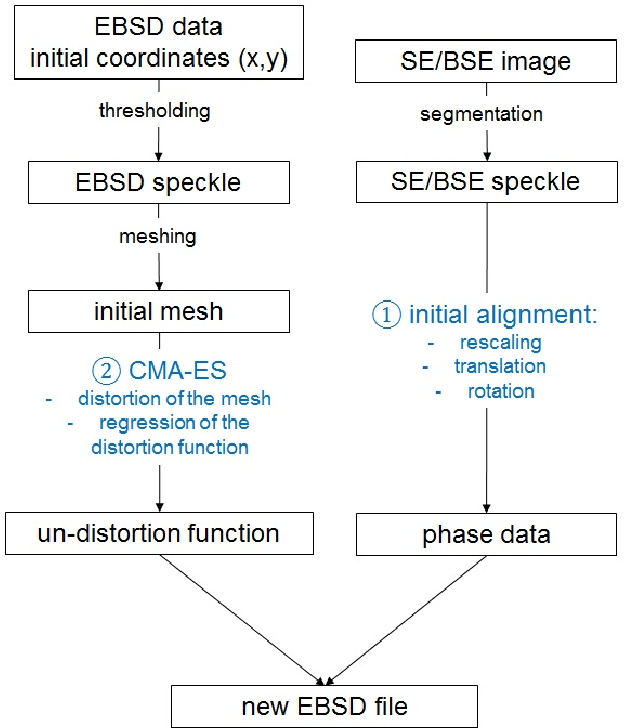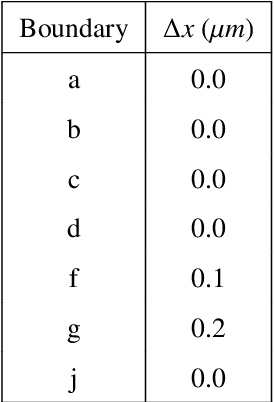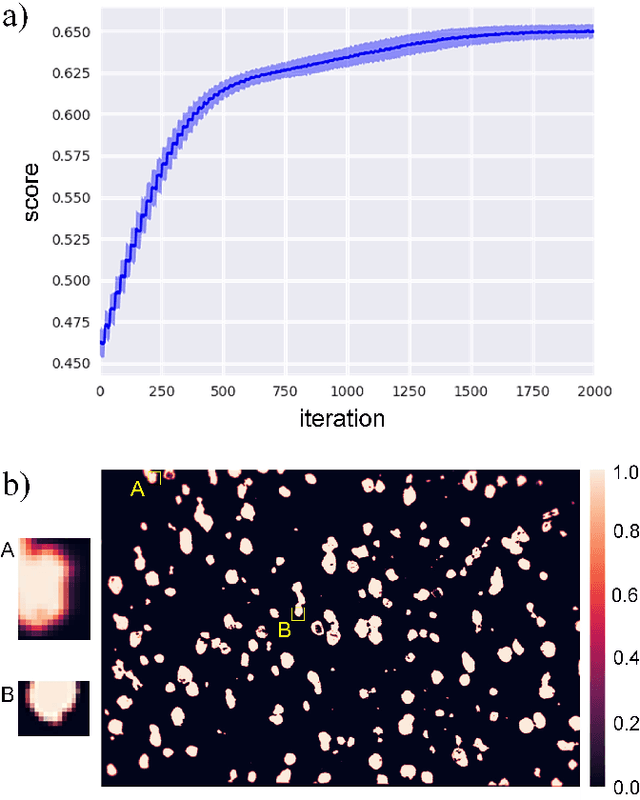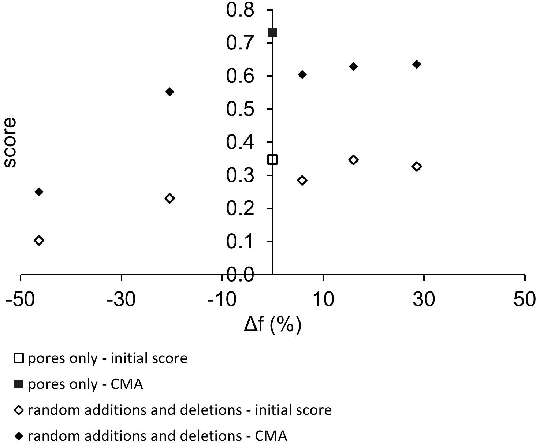Accurate reconstruction of EBSD datasets by a multimodal data approach using an evolutionary algorithm
Paper and Code
Mar 08, 2019



A new method has been developed for the correction of the distortions and/or enhanced phase differentiation in Electron Backscatter Diffraction (EBSD) data. Using a multi-modal data approach, the method uses segmented images of the phase of interest (laths, precipitates, voids, inclusions) on images gathered by backscattered or secondary electrons of the same area as the EBSD map. The proposed approach then search for the best transformation to correct their relative distortions and recombines the data in a new EBSD file. Speckles of the features of interest are first segmented in both the EBSD and image data modes. The speckle extracted from the EBSD data is then meshed, and the Covariance Matrix Adaptation Evolution Strategy (CMA-ES) is implemented to distort the mesh until the speckles superimpose. The quality of the matching is quantified via a score that is linked to the number of overlapping pixels in the speckles. The locations of the points of the distorted mesh are compared to those of the initial positions to create pairs of matching points that are used to calculate the polynomial function that describes the distortion the best. This function is then applied to un-distort the EBSD data, and the phase information is inferred using the data of the segmented speckle. Fast and versatile, this method does not require any human annotation and can be applied to large datasets and wide areas. Besides, this method requires very few assumptions concerning the shape of the distortion function. It can be used for the single compensation of the distortions or combined with the phase differentiation. The accuracy of this method is of the order of the pixel size. Some application examples in multiphase materials with feature sizes down to 1 $\mu$m are presented, including Ti-6Al-4V Titanium alloy, Rene 65 and additive manufactured Inconel 718 Nickel-base superalloys.
 Add to Chrome
Add to Chrome Add to Firefox
Add to Firefox Add to Edge
Add to Edge